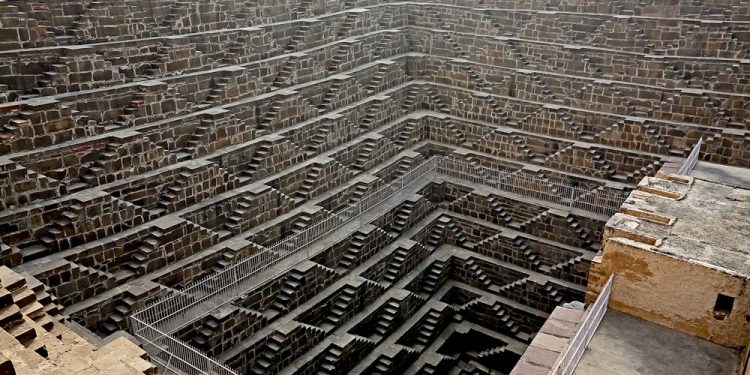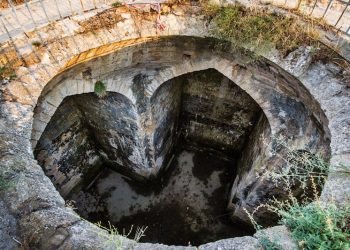The stepwell of Chand Baori is one of the most astonishing architectural feats of the ancient world. Built over a thousand years ago in the Indian state of Rajasthan, this inverted pyramid of 3,500 narrow stone steps descends 30 meters into the earth—forming a geometric masterpiece that was both functional and symbolic.
A forgotten marvel beneath the surface
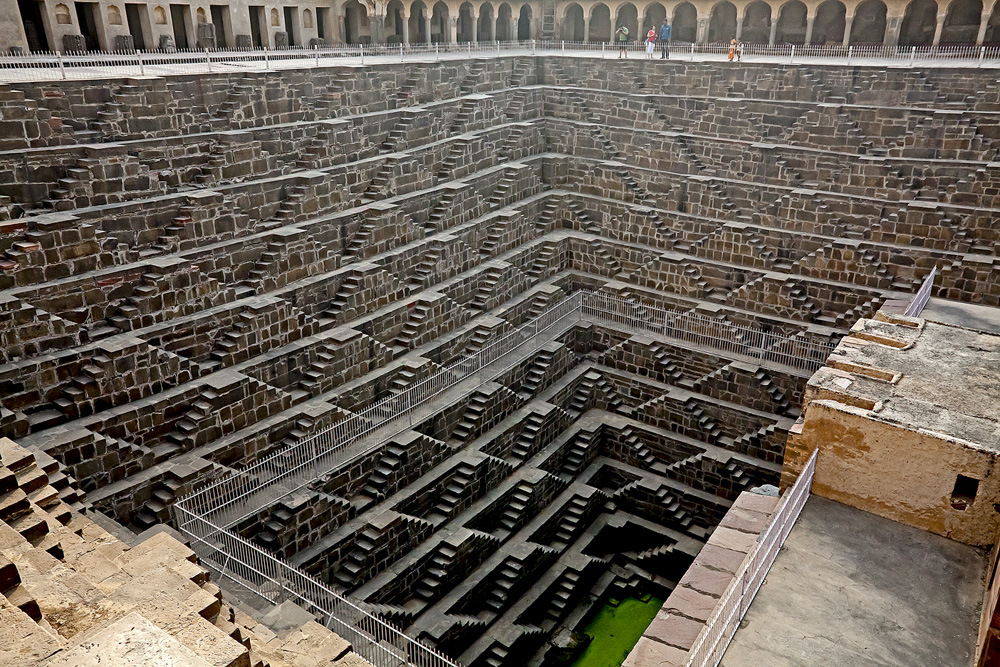
While many ancient sites have become world-famous—like the Pyramids of Giza or Machu Picchu—others remain hidden in plain sight. The stepwell of Chand Baori, located in the village of Abhaneri near the Harshat Mata Temple, is one such treasure.
Constructed in the 9th century during the reign of King Chand, this massive structure served a purpose far beyond aesthetics. Stepwells like Chand Baori were built across India to collect and store groundwater, ensuring communities could survive droughts and dry seasons. But Chand Baori wasn’t just a water reservoir—it was a center of life, ritual, and innovation.
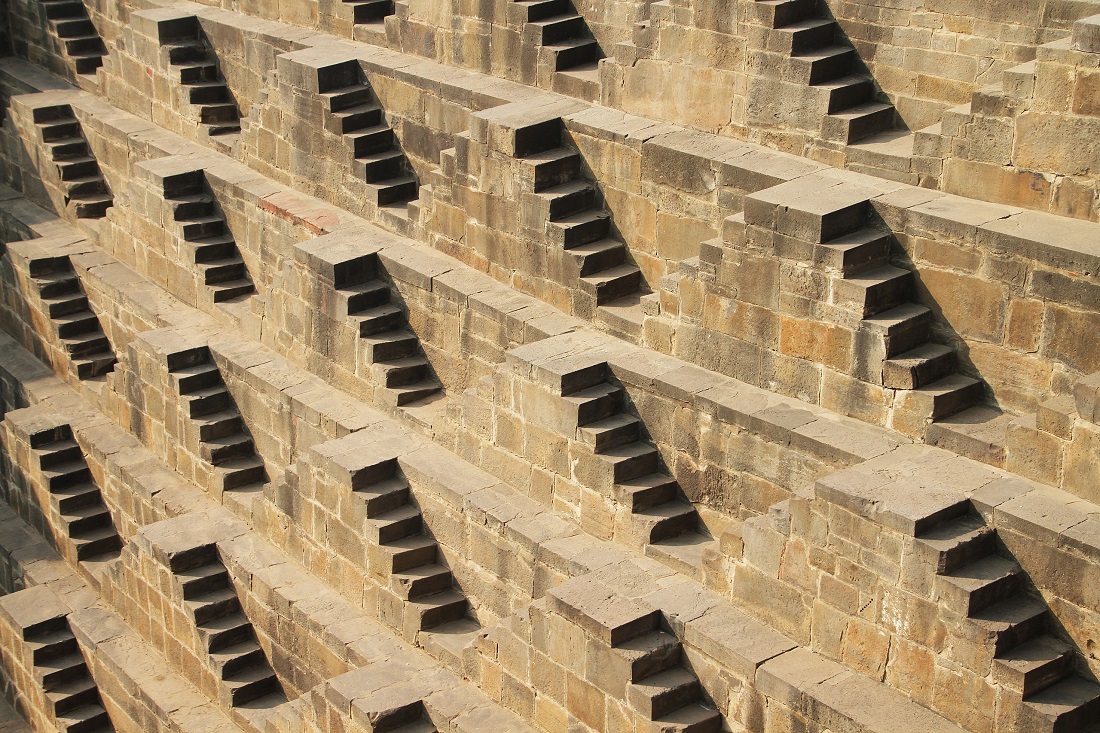
Precision, geometry, and myth
Carved in the shape of an inverted cone, the stepwell is made up of over 3,500 precisely engineered steps, arranged in a hypnotic crisscross pattern over 13 tiers. The result is a symmetrical labyrinth of stone that remains one of the deepest and largest stepwells ever constructed in India.
The stepwell of Chand Baori also held cultural and spiritual significance. Small shrines and temple platforms are built into its design, allowing people to gather, perform rituals, and pray. Some legends claim the stepwell was not built by human hands at all—but by ancient spirits, completed in a single night. While myth, this tale speaks to the seemingly impossible intricacy of its design.
At the bottom of the well, the air remains consistently 5–6°C cooler than the surface temperature—making it a popular gathering place during India’s scorching summers. In addition to providing water, the stepwell became a communal refuge, a site of shared resources, and a social hub.
A quiet refuge with purpose
Tucked along one side of Chand Baori is a raised pavilion, believed to have served as a resting space for royals or spiritual leaders. It offered relief from the heat and a quiet spot to reflect, overlooking the vast grid of steps below. Behind its walls, hidden chambers and storage rooms made the site more than just a spiritual retreat—it also functioned as a shelter and supply hub during times of drought or scarcity.
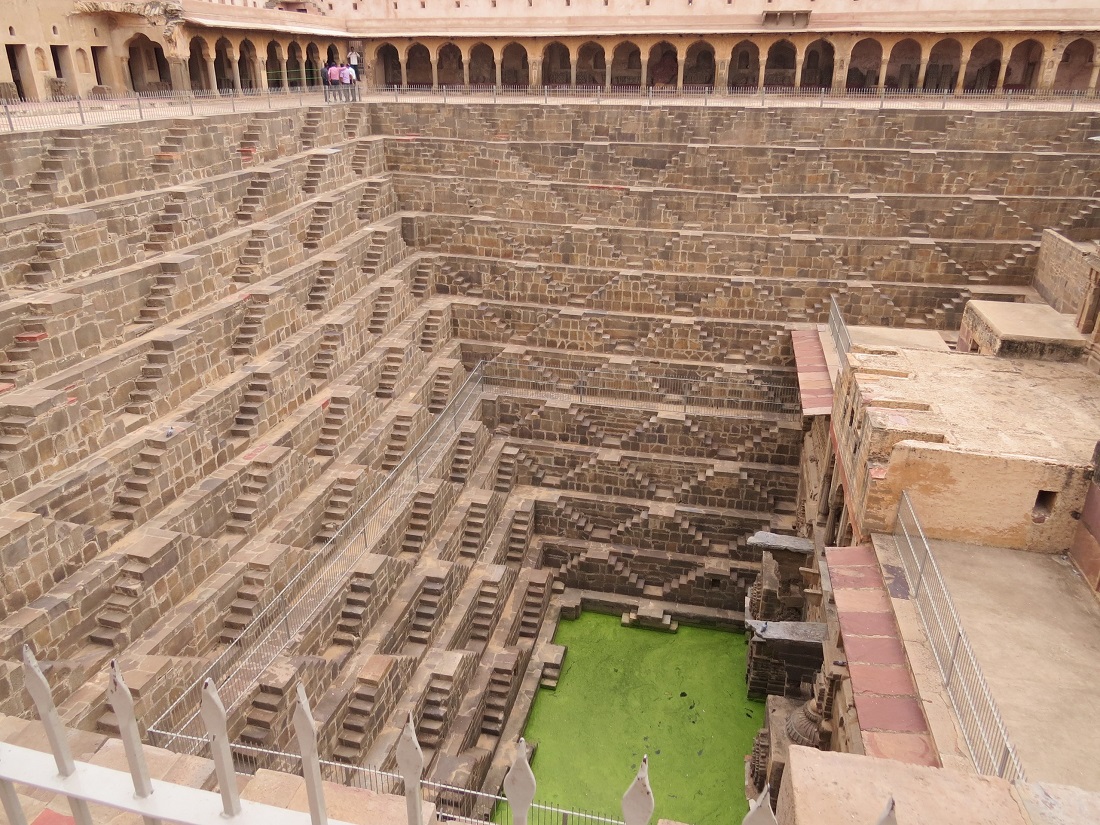
The design of Chand Baori reflects more than engineering skill—it shows a deep awareness of how to live in balance with the climate and the land. Like many ancient Indian structures, it blends utility with meaning. Even something as practical as collecting water was approached with ritual and reverence.
Despite its complexity and scale, Chand Baori remains overlooked by most of the world. While other monuments draw crowds, this one sits quietly in Rajasthan, just as it has for over a thousand years. It was designed to serve. To store water. To keep people cool. To bring a community together when the heat made everything else harder. Every stone has a purpose, every angle measured for function. Chand Baori isn’t frozen in time—it’s built into it.



